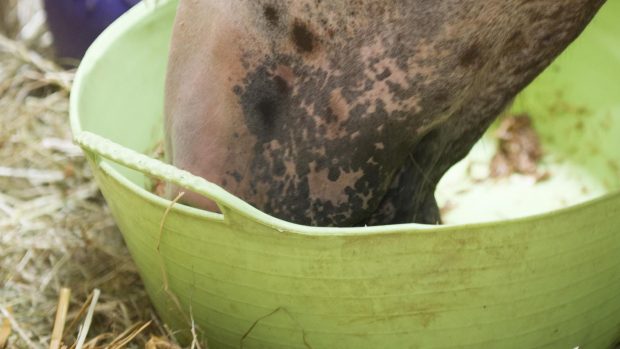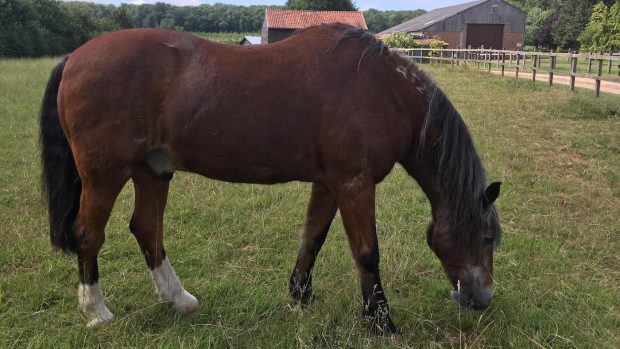Meet Ned — your average healthy, happy but hungry horse, and get the low down on what really goes on inside a horse’s digestive system...
1. Horses have 40 teeth to munch with.
2. In 24 hours, a horse can consume up to 5% of his bodyweight in grass.
3. Grass can be up to 7.5% simple sugars. So a horse could consume up to two bags of sugar in 24 hours…
4. A horse shouldn’t be left for more than six hours without forage — it’s key to digestive health.
5. Horses have a psychological need to chew.
6. The average horse can produce 12 litres of saliva per day from chewing.
7. 60% of a horse’s body is made up of water.
8. A horse needs 20,500 calories per day (compared to just 2,500 calories needed for a man).
9. Horses’ meal sizes should be kept to less than 2kg — this is because a horse’s stomach is the size of a rugby ball, and typically holds eight to 15 litres of food and liquid.
10. Food can pass through a horse’s stomach in as little as 30 minutes.
11. The pH in the lower part of the stomach can be as low as two — the equivalent of battery acid.
12. After leaving the horse’s stomach, the partially digested food continues its journey on to the small intestine.
13. The small intestine is 20 metres long — which is the width of a dressage arena. ‘Small’ therefore refers to its diameter…
14. The large intestine, which is the next stage of the journey, is six-seven meteres long (half the length of a bus!) and is made up of multiple parts — the caecum, large and small colon and the rectum.
Continued below…

Frosty grass: will eating it give your horse colic?
Have you ever wondered whether turning out on frosty grass could be harmful to your horse’s digestive system? Here's what

Winter feeding: how to keep a Hickstead Derby winner in top condition
Keeping competition horses in peak condition through the winter can be a challenge. We delve into the diet plan of
15. The caecum is only one metre long, but houses millions of bacteria that ferment fibre.
16. To maintain these helpful bacteria, you should change feeds slowly — no more than 0.5kg every other day.
17. Up to 72 hours after entering the horse’s mouth the food has reached the end of the digestive tract.
18. A horse will typically produce 10-12 poos a day.
For all the latest equestrian news and reports, don’t miss Horse & Hound magazine, out every Thursday





